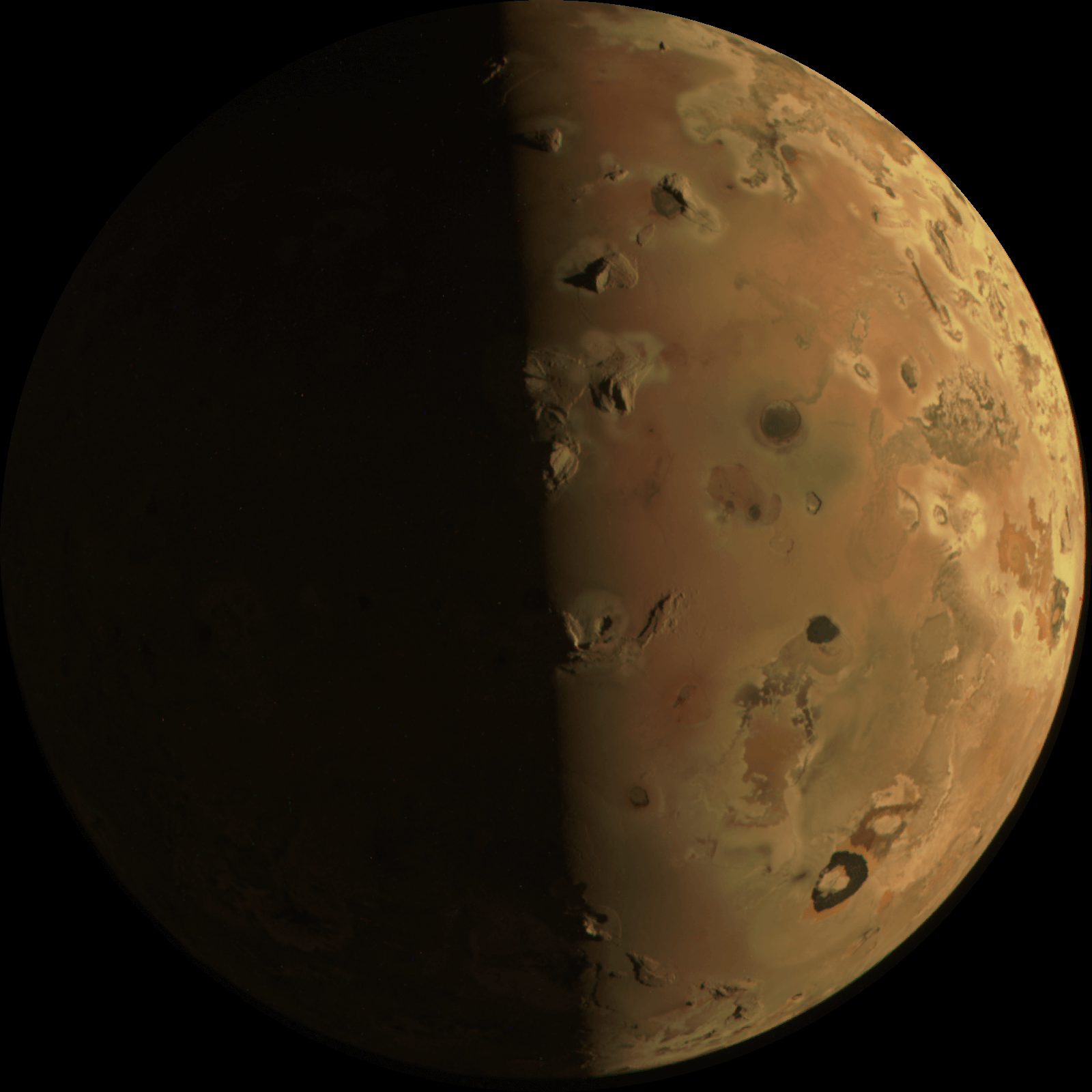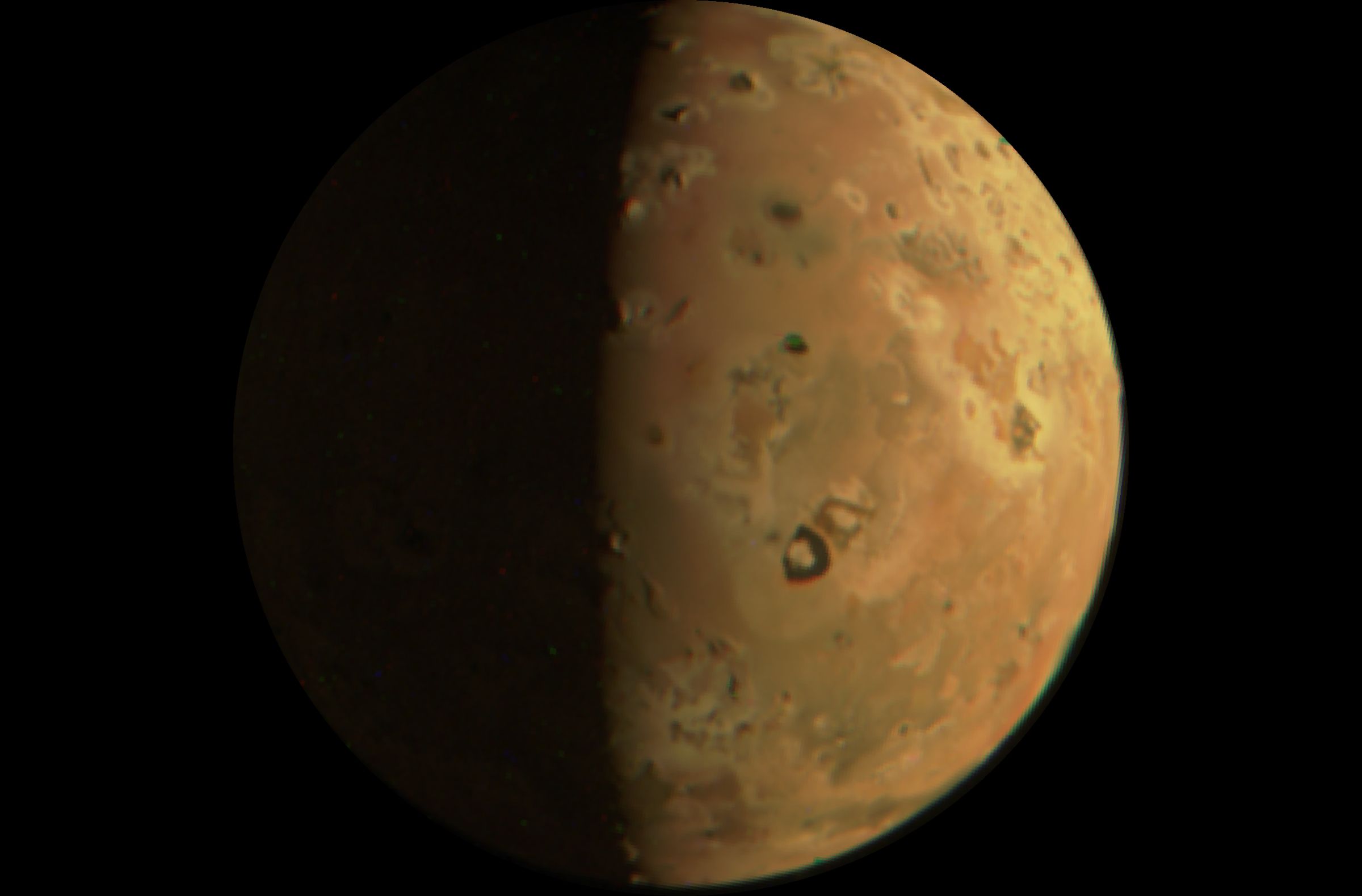NASA’s Juno spacecraft has completed its first ultra-close flyby of the hellish moon Io. The spacecraft has been orbiting our solar system’s gas giant, Jupiter, for several years now, completing multiple flybys of the moons and objects found within the Jovian system. This is the first time Juno has flown so close to Io, though it has captured images of Io in the past.
This particular flyby brought the iconic spacecraft within 920 miles of Io’s surface. The dense moon is the fourth largest satellite within the solar system, and unlike most of Jupiter and Saturn’s moons, Io is covered in a hellish landscape of more than 400 active volcanoes.
This hellish landscape has made Io quite a particularly interesting project for planetary scientists and astronomers who wish to study the geological activity of the moon. Juno completed its closest flyby of Io on December 30, bringing 2023 to a close with exceptionally interesting data and breathtaking images. Juno images of Europa have also helped us learn more about one of Jupiter’s icy moons.

The new data will help planetary scientists as they study the volcanoes on Io’s surface and try to determine how often the volcanoes erupt and even how that activity may interact with Jupiter’s magnetosphere, which bathes Io in intense radiation. Learning more about the Jovian system and the moons that surround the gas giant has only been made possible thanks to the close flybys that Juno completes, and this is no exception to the rule.
Juno will complete another close flyby of Io on February 3, 2024, which will allow scientists to compare changes on the surface of the hellish moon to see how the surface might be evolving over short periods of time. This could better help us understand the structure of the moon’s outer layers, which could see big changes depending on how the volcanic eruptions affect it all.
Despite how much data Juno has captured over the past several years, it’s only a matter of time before its exposure to the intense radiation in the Jovian system begins to deteriorate the spacecraft. These new images captured during Juno’s flyby of Io are already starting to see a reduction in the imager’s dynamic range, and there is even some striping noise, which astronomers believe is being caused by Juno’s extended exposure to Jovian radiation.
Still, the fact that it has been orbiting well beyond its original 2018 end of life is exciting, and has allowed us to capture tons of important data about the Jovian system. For now, operations will continue as normal, though NASA currently has an end-of-life plan in place to put the spacecraft to rest in September of 2025. Whether or not it gets extended again remains to be seen.

